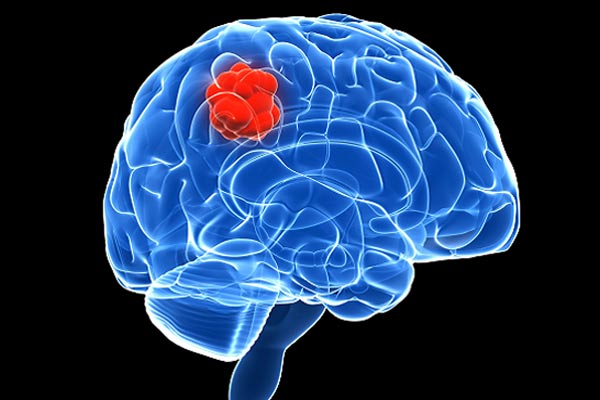
“HIV is invisible”
An international scientist’s team with the active participation of Russian researchers engaged in mathematical modeling of human immunodeficiency virus. Scientists want to understand how the virus interacts with the human body and how to deal with the consequences of its negative effects. Gennady Bocharov, Doctor of Physical and Mathematical Sciences, a leading scientific worker of the Federal State budget institution of science “Institute of Computational Mathematics of the Russian Academy of Sciences,” and Andreas Meyerhans, head of laboratory infection biology professor calf University. Pompeu Fabra in Barcelona, spoke about why the immune system is not able to effectively recover from the defeat of HIV infection, as well as how you can solve this problem.
– Mr. Andreas, could you tell us what other researchers are involved in the project?
Gennady Bocharov: Apart from me and my colleagues Andreas Meyerhansa, which is an experimental part of the study, the project works Vitaly Wolpert, a professor of mathematics at the Institute of Camille Jordan, Lyon 1 University, he specialized in mathematical modeling and solutions. We also cooperate with the Perm Regional Center for Prevention and Control of AIDS and Infectious Diseases – there are conducted clinical studies viral load, as well as hormonal and immune parameters in children born to HIV-infected mothers. They are led by four main executor of the project – Boris Bakhmetyev, PhD, Head of the Laboratory of ecological immunology Institute of Ecology and Genetics of Microorganisms, Ural Branch of the Russian Academy of Sciences.
– How did you manage to gather a team of scientists from different countries?
Gennady Bocharov: With the support of the fund is made possible to form a multi-disciplinary group of actively operating domestic and foreign researchers to implement a systematic approach to the study of mechanisms of chronic viral infections of humans and animals. The unique conditions provided by the Foundation for the study of this complex problem, combined with the accumulated experience in this field and established cooperation key executors of the project allow us to solve a very wide range of tasks: the development of methods for multiscale mathematical modeling of regulatory processes with the human immunodeficiency virus (HIV) to development of optimal modes of multimodal impact on the dynamics of infection taking into account the patient’s immune status. Participation in the post-graduate and masters allows to prepare a new generation of researchers in the field of mathematical immunology, possessing the necessary range of modern modeling tools and research experience in the international competitive environment.
– Tell us, please, what has already been done within the framework of this particular study?
Gennady Bocharov: Now we are focused on three fundamental aspects of mathematical modeling and multi-function. We want to understand the fundamental mechanism that is responsible for the development of chronic infection, and explore multi-modal (ie, acting on the various systems of the body) controls that can be applied to correct undesirable developments in the dynamics of infectious diseases. There are three different ways by their nature affect the dynamics of the interaction of HIV with the body of an infected person. The first widely available – antiretroviral therapy. There are about 26 drugs that allow to influence the different stages of the intracellular viral replication and maturation. In general it is a good way, but there are a number of side effects, it is expensive, and not all patients adhere to treatment regimens, which they offer as it substantially violates their quality of life.
– What are the side effects?
Meyerhans Andreas: For example, disturbances in the cardiovascular system, central nervous system, metabolic regulation system. Medicines that now exist on the market, use in various combinations, while they work on different stages of viral replication. Therefore, one of our goals – to combine these drugs in one, to design the most effective therapeutic agent by searching based on sensitivity analysis models synergetic effects in their joint action. It is necessary to make sure that the result of medication was maintained to the symptoms do not return within one or two weeks.
Gennady Bocharov: Russia immunodeficiency virus infected more than a million people, and not everyone gets expensive treatment. The second problem is that antiretroviral therapy does not provide a real full protection. The immune system does not recover even if the reduced viral load. This is because the imbalance between the different cell subsets of the immune system, such as regulatory T-cells and helper T lymphocytes CD4 +. The level of activity of immune processes is determined by the balance of activating and suppressive signals. HIV infection is enhanced expression of receptors that are responsible for the transmission of signals to decrease the functional activity, or even cell death.
Therefore, the second block approaches to the treatment involves the use of noninflammatory drugs that provide the various components of the immune defense or individual subpopulations of cells the ability to stimulate or inhibit specific parts of the immune response and thereby influence the dynamics of the system ‘of HIV – the human body. “
– Please tell us about your future research plans.
Gennady Bocharov: By the end of the year we plan to develop a multiscale model of HIV infection and to investigate on its basis the factors underlying the phenotype of different variants of the HIV infection and the failure of the immune response. We plan to put into print a book on mathematical modeling in immunology.
In general, mathematical modeling of complex systems is a popular method not only in immunology and biology, so training students for meaningful modeling – an urgent task.



